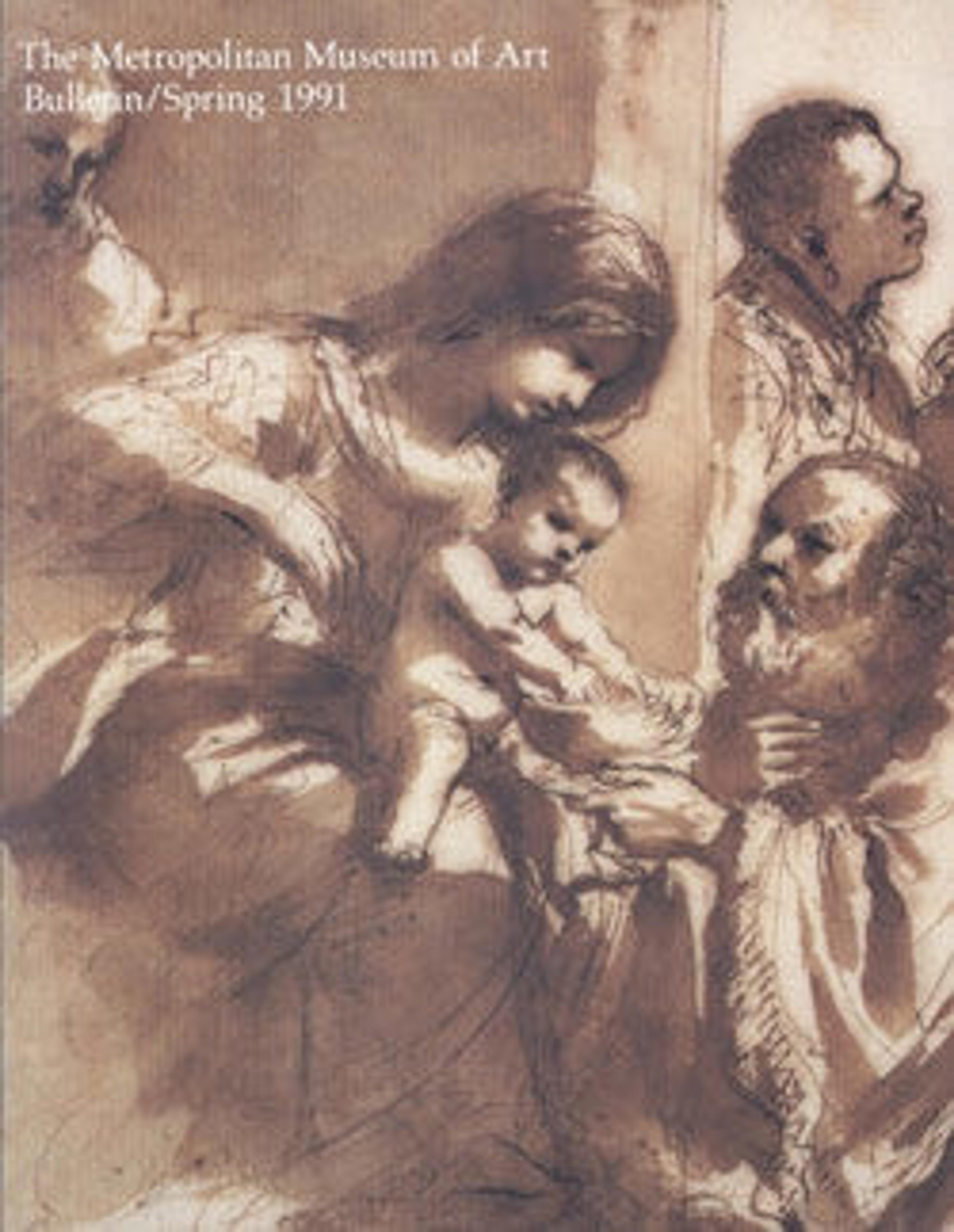Seated Old Man with Right Arm Upraised (Tithonus) (recto); Seated Nude Youth (figure of Day) (verso)
This study from life was intended for the elderly figure of Tithonus – the discarded lover of Aurora, goddess of dawn – who is seated on the left in Guercino's ceiling fresco of the ‘Aurora’ in the Casino Ludovisi, Rome, painted in 1621. Projected in sharp ‘sotto in sù’ (seen from below) perspective, the scene, showing Aurora crossing the heavens in a chariot, was a milestone in the Italian Baroque tradition of illusionistic ceiling painting. Guercino, one of the greatest and most prolific draftsmen of the Italian Baroque, realized this lively drawing with red chalk, thus powerfully enhancing the chromatic contrast between the figure and the blue paper. The fresco was commissioned from the young Guercino by Ludovico Ludovisi (1595-1632) soon after he was made cardinal and treasurer to the Holy See on February 15, 1621.
Walter Vitzthum identified this drawing in 1968 (then on the Florence art market), as a study for the figure of Tithonus in the Casino Ludovisi. The nude youth on the verso was connected by Mahon (Mahon, 1968, p. 91), not entirely convincingly, to the figure of Day in a lunette below one end of the ceiling fresco (Salerno, 1988, fig.2, p. 168) . The Casino Ludovisi decorations date from the second half of 1621. Comparable chalk studies from this period are Dead Christ with an Angel (1617-18) and Erminia (1619-20)(Royal Library, Windsor, inv. nos. 2755, 2898; See Mahon and Turner, 1989, cat. nos. 3, 12, respectively).
The drawing technique and style independently confirm the dating of this sheet to 1621, because the figure's interior modeling is relatively broad and painterly when compared with that of more refined chalk studies (influenced by a 1624 visit to Parma) from later in the 1620s, such as Study for a Figure of Semele of 1625 (Vienna, Albertina, inv. no. 2395) and Study for a Figure of Zechariah of 1626-27, for Piacenza Cathedral (Genoa, Palazzo Rosso, inv. no. 1118; see: Turner and Plazzotta, 1991, cat. nos. 57, 58, respectively).
Walter Vitzthum identified this drawing in 1968 (then on the Florence art market), as a study for the figure of Tithonus in the Casino Ludovisi. The nude youth on the verso was connected by Mahon (Mahon, 1968, p. 91), not entirely convincingly, to the figure of Day in a lunette below one end of the ceiling fresco (Salerno, 1988, fig.2, p. 168) . The Casino Ludovisi decorations date from the second half of 1621. Comparable chalk studies from this period are Dead Christ with an Angel (1617-18) and Erminia (1619-20)(Royal Library, Windsor, inv. nos. 2755, 2898; See Mahon and Turner, 1989, cat. nos. 3, 12, respectively).
The drawing technique and style independently confirm the dating of this sheet to 1621, because the figure's interior modeling is relatively broad and painterly when compared with that of more refined chalk studies (influenced by a 1624 visit to Parma) from later in the 1620s, such as Study for a Figure of Semele of 1625 (Vienna, Albertina, inv. no. 2395) and Study for a Figure of Zechariah of 1626-27, for Piacenza Cathedral (Genoa, Palazzo Rosso, inv. no. 1118; see: Turner and Plazzotta, 1991, cat. nos. 57, 58, respectively).
Artwork Details
- Title:Seated Old Man with Right Arm Upraised (Tithonus) (recto); Seated Nude Youth (figure of Day) (verso)
- Artist:Guercino (Giovanni Francesco Barbieri) (Italian, Cento 1591–1666 Bologna)
- Date:1621
- Medium:Red chalk on blue paper
- Dimensions:9 1/4 x 12 11/16 in. (23.5 x 32.2 cm).
- Classification:Drawings
- Credit Line:Rogers Fund, 1970
- Object Number:1970.168
- Curatorial Department: Drawings and Prints
More Artwork
Research Resources
The Met provides unparalleled resources for research and welcomes an international community of students and scholars. The Met's Open Access API is where creators and researchers can connect to the The Met collection. Open Access data and public domain images are available for unrestricted commercial and noncommercial use without permission or fee.
To request images under copyright and other restrictions, please use this Image Request form.
Feedback
We continue to research and examine historical and cultural context for objects in The Met collection. If you have comments or questions about this object record, please contact us using the form below. The Museum looks forward to receiving your comments.
